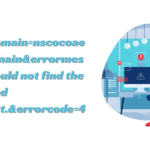Types of PCB Design Tools for Your Project
- 1 Types of PCB Design Tools
- 1.1 1. Schematic Capture Tools
- 1.2 2. PCB Layout Tools
- 1.3 3. Simulation Tools
- 1.4 4. 3D Visualization Tools
- 1.5 5. Routing Tools
- 1.6 6. Design Rule Check (DRC) Tools
- 1.7 7. Library Management Tools
- 1.8 8. Gerber File Generation Tools
- 2 Conclusion
- 2.1 Frequently Asked Questions
- 2.1.1 What is the importance of selecting the right PCB design tool?
- 2.1.2 What factors should I consider when evaluating PCB design tools?
- 2.1.3 What are some popular PCB design tools?
- 2.1.4 How can I choose the most suitable PCB design tool for my project?
- 2.1.5 Why is community support important for PCB design tools?
Printed Circuit Boards (PCBs) are the backbone of modern electronic devices. From smartphones to complex industrial machines, PCBs facilitate the electrical connections between various components, making the device functional. The design and development of PCBs require specialized software tools known as PCB design tools or Electronic Design Automation (EDA) tools. These tools enable engineers and designers to create, simulate, and test PCB layouts before they are physically manufactured.
Selecting PCB design tools involves recognizing the specific tools available and their features. Understanding these elements helps make an informed choice that aligns with project requirements.
Types of PCB Design Tools

We will explore the various PCB design tools, their features, and how they contribute to the overall design process. Whether you’re a seasoned engineer or a hobbyist, understanding these tools can significantly enhance your ability to design efficient and reliable PCBs.
1. Schematic Capture Tools
Schematic capture tools are the starting point for any PCB design. These tools allow designers to visually represent the electronic circuit using symbols for components like resistors, capacitors, transistors, and integrated circuits. The schematic serves as a blueprint for the PCB layout, ensuring that all connections between components are accurately represented.
Popular Schematic Capture Tools:
- Altium Designer: A comprehensive EDA tool that integrates schematic capture with PCB layout, simulation, and analysis features.
- KiCad: An open-source tool that offers robust schematic capture capabilities, widely used by hobbyists and professionals.
- OrCAD Capture: A powerful tool known for its ease of use and compatibility with other Cadence design tools.
2. PCB Layout Tools
Once the schematic is complete, the next step is translating it into a PCB layout. PCB layout tools help designers place components on the board, route electrical connections (traces), and define the board’s layers. These tools also include design rule checks (DRC) to ensure the layout meets manufacturing constraints.
Popular PCB Layout Tools:
- Eagle PCB: Known for its user-friendly interface and extensive components library, Eagle is a favorite among hobbyists and small-scale designers.
- Allegro PCB Designer: Part of the Cadence suite, Allegro offers advanced features for complex PCB designs, including high-speed and high-density interconnects.
- DesignSpark PCB: A free tool with a rich feature set, ideal for beginners and professionals looking for a cost-effective solution.
3. Simulation Tools
Simulation tools are crucial for verifying the functionality of a PCB design before manufacturing. These tools allow designers to simulate the electrical behavior of the circuit, analyze signal integrity, and identify potential issues such as crosstalk, power integrity problems, and electromagnetic interference (EMI).
Popular Simulation Tools:
- PSpice: A widely used tool for analog and mixed-signal circuit simulation, PSpice allows designers to test their designs under various conditions and optimize performance.
- LTspice: Developed by Analog Devices, LTspice is a free simulation tool known for its speed and accuracy in simulating analog circuits.
- HyperLynx: A Mentor Graphics tool specializing in signal integrity and power integrity analysis, handy for high-speed PCB designs.
4. 3D Visualization Tools
3D visualization tools provide a realistic view of the PCB design, allowing designers to inspect the board from different angles and ensure that components are correctly placed. These tools are handy for checking clearances, avoiding collisions, and ensuring the board fits into its intended enclosure.
Popular 3D Visualization Tools:
- Altium Designer 3D: Altium’s 3D PCB editor allows for real-time 3D visualization, enabling designers to detect and correct issues early in the design process.
- Fusion 360 with Eagle: Autodesk’s Fusion 360 integrates with Eagle to offer powerful 3D visualization and mechanical design capabilities, bridging the gap between PCB design and product design.
- SOLIDWORKS PCB: SOLIDWORKS PCB combines PCB design with SOLIDWORKS’ renowned mechanical design tools, offering a seamless experience for designing a product’s electronic and mechanical aspects.
5. Routing Tools
Routing tools define the paths for electrical connections on the PCB. These tools offer both manual and automatic routing options. While manual routing gives designers complete control over trace placement, automatic routing tools use algorithms to optimize trace paths for minimal signal interference and efficient use of board space.
Popular Routing Tools:
- AutoRouter by Eagle: Eagle’s AutoRouter is known for its flexibility and efficiency, allowing designers to route complex designs with minimal effort quickly.
- TopoR (Topological Router): A unique routing tool that uses topological algorithms to create highly efficient trace paths, reducing the length and complexity of traces.
- Allegro PCB Router: Part of the Allegro suite, this tool offers advanced routing features for high-speed and high-density designs, ensuring optimal performance and manufacturability.
6. Design Rule Check (DRC) Tools
Design Rule Check (DRC) tools ensure that a PCB layout complies with the manufacturing constraints and standards. These tools check for issues like minimum trace width, spacing violations, and placement errors, helping designers avoid costly mistakes during production.
Popular DRC Tools:
- Altium DRC: Altium Designer includes a comprehensive DRC feature that checks the layout against predefined design rules, ensuring compliance with manufacturing specifications.
- KiCad DRC: KiCad’s DRC tool offers robust error-checking capabilities, helping designers identify and fix issues before sending the design for manufacturing.
- Mentor Graphics DRC: Mentor Graphics offers advanced DRC tools that integrate with their PCB design software, providing real-time feedback on design rule violations.
7. Library Management Tools
Library management tools help designers manage the components and symbols used in their designs. These tools include databases of electronic components with detailed information such as footprints, electrical characteristics, and part numbers. Efficient library management is crucial for maintaining consistency across designs and ensuring that components are up-to-date and available.
Popular Library Management Tools:
- Altium Vault: Altium Vault offers centralized library management, allowing teams to share and maintain component libraries across multiple projects.
- UltraLibrarian: A popular tool that provides access to millions of component symbols, footprints, and 3D models, ensuring that designers have the most accurate and up-to-date libraries.
- SnapEDA: An online library management tool that offers a vast database of verified component models, making it easy for designers to find and import components into their designs.
8. Gerber File Generation Tools
Once the PCB design is complete, it needs to be converted into a format manufacturers can use to produce the board. Gerber files are the industry standard for this purpose. Gerber file generation tools export the design layers, such as copper, solder mask, and silkscreen, into individual files that can be read by manufacturing equipment.
Popular Gerber File Generation Tools:
- CAM350: A comprehensive tool for Gerber file generation and verification, CAM350 ensures that the files meet industry standards and are error-free.
- GerbView: A free Gerber viewer that allows designers to inspect and verify their Gerber files before sending them to the manufacturer.
- Altium CAMtastic: Altium’s CAMtastic tool offers advanced Gerber file generation and editing capabilities, allowing designers to fine-tune their files for manufacturing.
Conclusion
PCB design tools are essential for creating reliable and efficient electronic circuits. From schematic capture to PCB layout, simulation, and manufacturing, these tools provide the necessary features to guide designers through every step of the design process. Whether you are working on a simple circuit or a complex multilayer board, choosing the correct set of PCB design tools can significantly impact the quality and success of your project.
As technology advances, PCB design tools become more powerful and accessible, enabling designers of all skill levels to bring their ideas to life. By understanding the different PCB design tools available, you can make informed decisions and enhance your ability to create innovative, high-performance PCBs.
Frequently Asked Questions
What is the importance of selecting the right PCB design tool?
Choosing the right PCB design tool is crucial because it directly affects the efficiency and quality of your project. The right tool can enhance your design process, reduce errors, and save costs by aligning with your specific needs, such as design complexity and budget.
What factors should I consider when evaluating PCB design tools?
When evaluating PCB design tools, consider ease of use, cost structures, design complexity, and specific project requirements. It’s important to assess how well a tool caters to collaboration, visualizations, and community support.
What are some popular PCB design tools?
Popular PCB design tools include Tool A, known for its user-friendly interface; Tool B, which specializes in advanced simulation; and Tool C, which offers a balance of features for budget-conscious designers. Each tool addresses different project needs effectively.
How can I choose the most suitable PCB design tool for my project?
To choose the best PCB design tool, evaluate your project needs based on complexity and budget. Consider features, user reviews, and community support. Trying out trial versions or demos can also help you gauge the tool’s functionality.
Why is community support important for PCB design tools?
Community support is essential because it provides guidance, shared experiences, and solutions to common problems. Access to a community can enhance your learning, improve problem-solving, and keep you updated on best practices for using your chosen design tool.

















